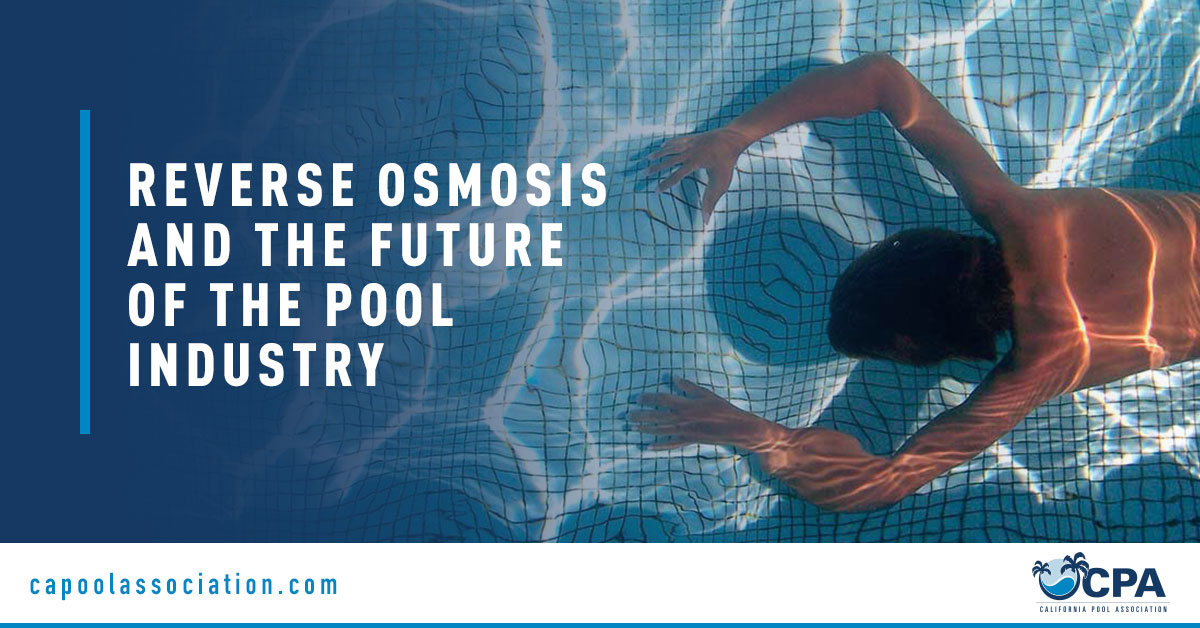
There has been a buzz in the business around reverse osmosis. With a severe drought in California and hysteria surrounding the topic of water, it’s no question we should be talking about conservation any way we can.
I think it would be helpful for us to understand this technology, how it can be applied in our industry and where we go from here. Reverse Osmosis (RO) in the simplest terms, is forcing water at a high pressure through a semipermeable membrane, allowing for the removal of dissolved particles. This process has been developing since the 1950’s, but really entered mainstream production in the 1970’s. The most common application of RO is to create drinking water, although other applications do exist.
Let’s transition for a minute to the pool industry: by trying to essentially “store” and “reuse” water over a period of several years we create an interesting scenario chemically speaking. Because of the physical nature of evaporation and refilling, we find ourselves outside of the parameters that we ideally want to be in, namely our calcium hardness and TDS. We do our best to maintain the factors we can control like pH and TA, but as the water ages even these factors become more and more difficult to maintain.
So then we inevitably end up not using our saturation index (try getting that to 0.0 with 1,000 ppm Calcium Hardness!) and we get backed into a corner until we cry uncle (aka drain!).
We do all this while trying to get the leaves out, balance our books, not burn kids eyeballs out, replace that lousy new product that came out last year, and try not to get sued by someone.
And now, to make matters worse, draining has been virtually eliminated as a viable option. Besides, we never really drained as often as were supposed to anyway. Our textbooks tell us every 3 – 5 years and most of us ignore that.
Enter Reverse Osmosis. RO, modified for the industry, can remove the dissolved solids from the water that cause us all kinds of problems. Now we can stand a fighting chance keeping our pools balanced on the saturation index. All of this while saving 85-90% of the water.
THIS IS A GAME CHANGER.
Now, instead of timidly telling our customers they need to drain and refill, we can confidently approach them with an alternative solution. Obviously there is a cost associated with this, but I’ve been pleasantly surprised at how receptive customers are when it comes to conservation.
The result of this process is a lower TDS, but the water also performs better chemically, your chlorine will go further, and the water will feel much better to your customer. Not to mention the benefits to the pool finish and the equipment. It’s easy to see how this can become the future of our excellent and growing industry.
About the Author:
Brett Gereau has been in the pool service industry for 12 years. He started working for Alan Smith Pools in 2014. From there, he and Alan started Purified Pool Water running the largest RO system in the pool industry today.